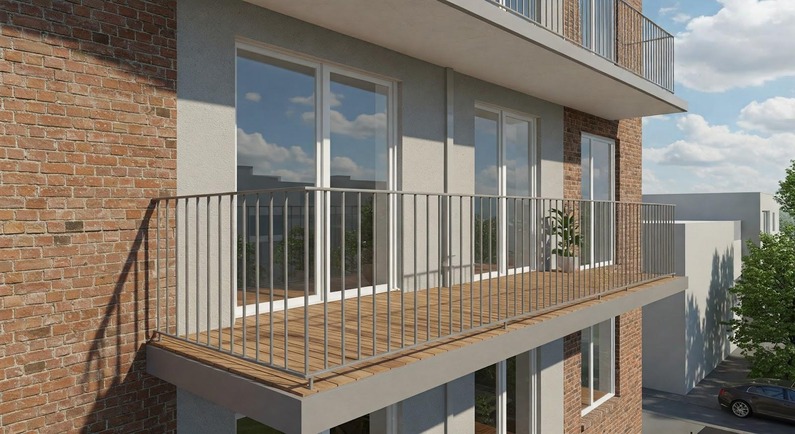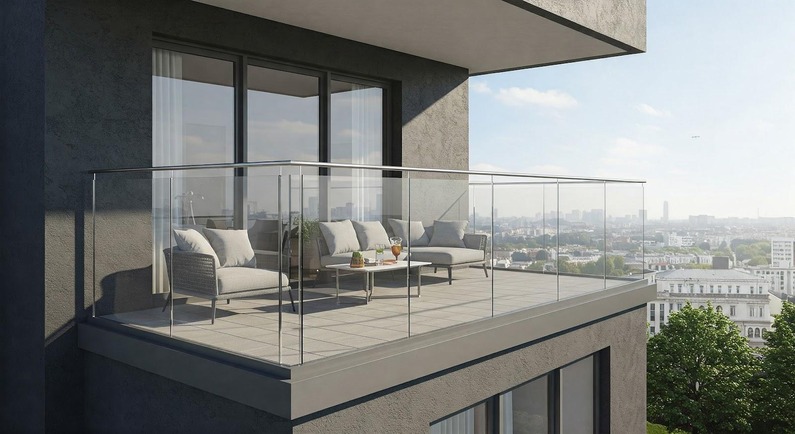Owning and managing a multi-unit apartment building in California comes with many responsibilities, especially when it comes to resident safety and legal compliance. One of the most critical recent regulations is SB 721, known as California’s apartment balcony inspection law.
This law requires landlords and property managers to conduct structural inspections on exterior elevated elements—such as balconies, stairways, and walkways—that are common in apartment buildings. The goal? Prevent accidents and preserve structural integrity.
In this guide, we’ll break down what SB 721 apartment balcony inspections involve, the specific structures impacted, and how property owners can meet the SB 721 compliance requirements before the inspection deadline. Whether you’re a seasoned landlord or new to property management, this article will give you the clarity and resources you need to comply and protect your investment.
What Is SB 721?
SB 721, also known as the California Building Code – Exterior Elevated Elements Inspection Law, was enacted in 2018 following the 2015 Berkeley balcony collapse that killed six students and injured seven more. The collapse was attributed to water intrusion and dry rot in the wooden supports of a fifth-story balcony—issues that went undetected and unaddressed.
To prevent similar tragedies, SB 721 mandates regular inspections of elevated wooden structures in buildings with three or more dwelling units. It specifically targets rental properties such as apartment complexes.
The law requires an initial inspection by January 1, 2025, followed by re-inspections every six years. All evaluations must be conducted by a licensed SB 721 inspector, such as a structural engineer, architect, or qualified contractor.
What Structures Are Covered Under SB 721?
SB 721 focuses on exterior elevated elements (EEEs) that are exposed to weather, elevated more than six feet off the ground, and supported primarily by wood or wood-based products. These are the areas most susceptible to wear, moisture damage, and long-term deterioration.
This includes:
- Balconies, including cantilevered and enclosed styles
- Decks used by tenants for access or recreation
- Walkways such as outdoor hallways or breezeways
- Stairways and stair landings leading to upper floors
- Porches that provide access to unit entries
Many of these elements are structurally vital and heavily used. If compromised, they pose serious safety and liability risks.
What Makes SB 721 Different from Other Building Codes?
Unlike general building code maintenance standards, SB 721 is a proactive safety law. Its purpose is to detect hidden structural issues before they become emergencies. Unlike SB 326, which targets condominiums and HOAs, SB 721 applies specifically to rental properties, making it especially relevant for apartment building owners and property managers.
Key differences include mandatory scheduled inspections, required documentation, and a clearly defined timeline for compliance. It also requires inspections by credentialed professionals rather than standard building maintenance staff.
Required Inspections Under SB 721
SB 721 inspections must follow a detailed protocol. A qualified inspector—licensed as a structural engineer, architect, or experienced contractor—must examine at least 15% of the EEEs in each building. The selection of elements is statistically significant and meant to provide a comprehensive picture of the overall condition.
Inspections must include both visual assessments and, where necessary, probing or non-invasive testing. This might involve borescopes to inspect inside concealed framing, moisture meters to detect water damage, and infrared cameras to spot hidden rot.
After the inspection, the professional will generate a written report outlining their findings. If deficiencies are found that present an immediate safety risk, the inspector is required to notify the local building authority. Property owners must address any urgent repairs within 120 days, unless an extension is granted.The final report should be retained for at least two inspection cycles and made available to future inspectors or code enforcement officers. This documentation serves as both a safety record and a legal safeguard for owners.

How Apartment Owners Should Prepare for SB 721 Inspections
Preparing for your SB 721 apartment balcony inspection is essential for staying on schedule and avoiding penalties.
Start by reviewing the layout of your property and identifying all structures that may qualify as exterior elevated elements. If your apartment complex was built before the 2000s, it’s likely that wood-based balconies and walkways are present and vulnerable to long-term degradation.
Next, secure a qualified inspector with specific experience in SB 721 requirements. Not all contractors understand the unique demands of the law. It’s best to work with a firm like West Coast Deck Inspections, which specializes in California rental property inspection law and is familiar with the materials, weather conditions, and construction trends common to the region.
Gather all documentation related to your property’s past repairs, blueprints, and maintenance logs. Having these on hand makes the inspection smoother and provides context for the structural conditions observed.
Be sure to inform tenants in advance. Access to balconies or walkways may be needed, so clear and respectful communication is essential to avoid conflicts and ensure scheduling cooperation.
Most importantly, prepare for the possibility of repairs. Not all inspection findings require emergency intervention, but many do require corrective action within specific timelines. Budgeting for these costs in advance can help prevent delays and financial strain.
And remember—waiting too long could lead to a bottleneck in available inspectors as the deadline approaches. Scheduling your inspection well ahead of the SB 721 deadline allows time for follow-ups, documentation, and peace of mind.
Common Issues Found During Balcony Inspections
Many apartment owners are surprised by what inspectors find during apartment building balcony inspections. Even structures that look fine on the surface can have underlying problems.
One of the most common issues is water damage, which causes wood rot and compromises load-bearing capacity. Moisture can seep in through unsealed joints, poorly installed flashing, or aged waterproofing membranes. Over time, this leads to structural weakening.
Loose railings and signs of instability are another frequent red flag. These conditions pose an immediate fall hazard and often require urgent attention.
Inadequate drainage is also a top concern. If a deck or balcony lacks proper slope or has clogged drainage points, water may pool and increase the chance of rot and corrosion.
These findings aren’t just safety issues—they’re also liability traps if left unaddressed.
Benefits of SB 721 Compliance
Meeting SB 721 requirements offers numerous benefits that go beyond legal protection.
First and foremost, resident safety is significantly improved. Knowing that balconies and elevated walkways are regularly inspected reassures tenants that their well-being is a top priority.
Compliance also provides legal defense. If an incident were to occur, having proof of timely inspections and corrective action may shield owners from negligence claims.
From a business perspective, staying compliant enhances property value and may even provide insurance benefits. Some insurers now ask for proof of balcony safety law California compliance as part of underwriting or renewal processes.
Additionally, inspections provide valuable data for maintenance planning. Even if no major repairs are needed, insights from a qualified inspector can help prioritize future upkeep and budget allocations.For landlords and managers, showing this level of care and diligence can improve tenant satisfaction, build trust, and reduce turnover. In today’s rental market, a reputation for safety can set your property apart.

Where to Get SB 721 Balcony Inspections in California
For trusted, professional inspections that help you meet California rental property laws, look no further than West Coast Deck Inspections.
Serving apartment owners throughout California, they specialize in exterior elevated elements inspection and fully understand the demands of SB 721 compliance. Their team includes licensed structural engineers who use advanced technology and proven methods to deliver accurate, comprehensive results.
West Coast Deck Inspections offers:
- Transparent reports with repair prioritization
- Coordination with property managers and tenants
- On-time scheduling ahead of the SB 721 deadline
- Guidance through repairs and re-inspections
Visit West Coast Deck Inspections today to learn more, request a quote, or book your property’s inspection.
Don’t Wait to Secure Your Property’s Future
Compliance with SB 721 isn’t just a regulatory box to check—it’s an opportunity to enhance safety, protect your investment, and demonstrate leadership in California’s rental housing industry.
Whether you manage a single triplex or a portfolio of large apartment buildings, starting your inspection process now gives you the time and flexibility to avoid rushed decisions and costly oversights.
Partnering with professionals like West Coast Deck Inspections ensures that your building is evaluated with care, integrity, and expertise.
Take action today. The safety of your residents and the future of your property depend on it.
